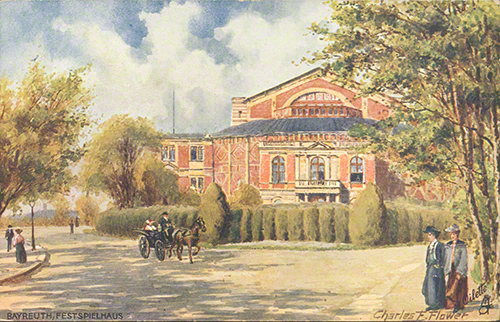1. Weiden

In August Reger is invited by his uncle Johann Baptist Ulrich to visit the Bayreuth festival. He attends Parsifal as conducted by Felix Mottl in the staging and scenography of the premiere performance of 1882, and the Meistersinger von Nürnberg, given this year for the first time at Bayreuth, under Hans Richter. Reger, who is experiencing an orchestra or even a music drama for the first time, decides to become a musician due to the powerful impression.
In late summer he composes his first work, a large-scale, 120 pages Overture in B minor (WoO I/1), for a small instrumentation (possibly flute, clarinet, piano and string quintet). Adalbert Lindner sends this in November to Hugo Riemann, the leading musicologist of his time, who replies positively, however strongly recommends to repress Wagner's influence and to write melodies rather than motives (cf. Riemann's letter of 26 November 1888 to Lindner). In December Reger thanks Riemann for his advice and the sending of textbooks, with which he begins to study privately.
Postal items from this year whose sender or addressee is Max Reger.
Images from the Max Reger Foto Gallery that originate from this year and have a direct reference to Max Reger.
Reference
Max Reger Biography – 1888, in: Max-Reger-Portal, www.maxreger.info/biography/1888, Max Reger Biography Data, V. 3.2.0, last check: 13th December 2025.